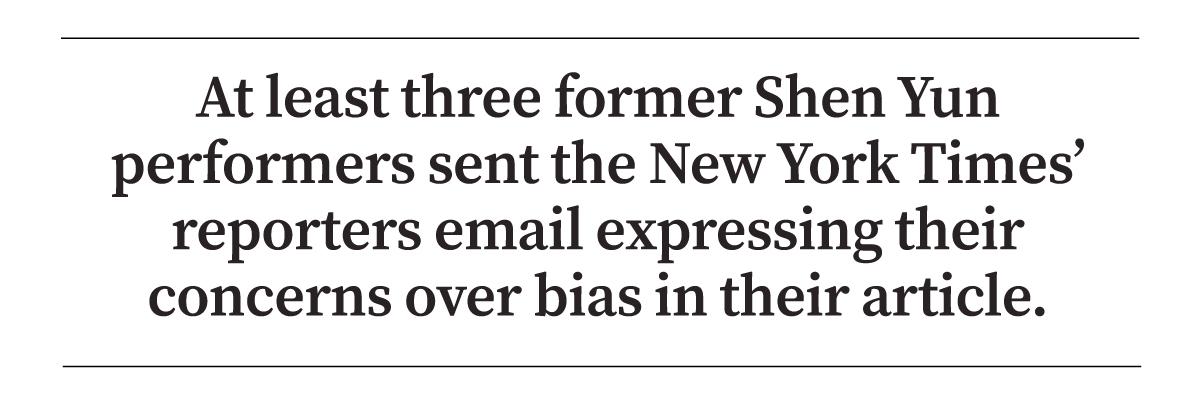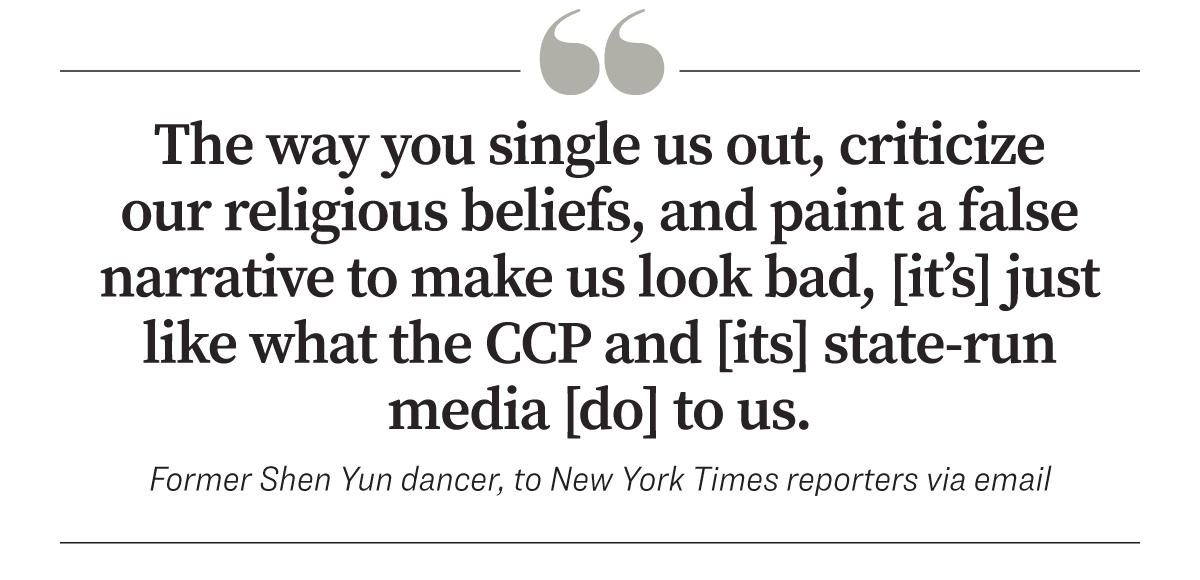Recent articles by The New York Times attacking Shen Yun Performing Arts, an arts group run by Chinese dissidents, are flawed to the point of requiring retraction, according to a recent report.
“The extent to which the Times’ reporting achieves the goals of the Chinese Communist Party (CCP) is also worth noting and deeply disturbing,” it states.
The CCP has targeted Shen Yun since the company was founded in the United States in 2006 by a group of Chinese expats who practiced Falun Gong, a Chinese spiritual discipline based on the principles of truthfulness, compassion, and tolerance. The practice has been brutally persecuted by the CCP for the past quarter-century.
The performing arts company has become a cultural phenomenon, with eight dance troupes and orchestras that perform for about a million people every year. Its stated mission is to revive traditional Chinese culture free of communist influence. Some of its dance pieces cast a spotlight on the ongoing persecution of Falun Gong in China.
The company is based at a campus in upstate New York along with two affiliated religious schools, Fei Tian College and Fei Tian Academy of the Arts.
On Aug. 16, The New York Times ran its main article alleging Shen Yun abuses its performers, mainly by forcing them to perform while injured.
The article, authored by Nicole Hong and Michael Rothfeld, was followed by four shorter pieces that rehashed and summarized the same allegations.
“The findings raise serious concerns about why the Times would engage in reporting that breaches journalistic ethics, while obviously harming a religious minority that is persecuted in China,” the report said, calling on the paper to retract the articles and investigate how it was possible they were produced in the first place.
In an earlier report, the center detailed its research of the CCP’s more than 120 attempts to sabotage Shen Yun. That report included information gathered from interviews with more than 100 current and former Shen Yun performers and others who worked with the company.
Upon the publication of the New York Times articles, the FDIC interviewed yet more current and former Shen Yun artists.
It concluded that The New York Times “disregarded repeated and good-faith attempts by Shen Yun and others to provide information that ran counter to its preconceived narrative, used highly problematic sources and a small sample size to build a particular storyline, ignored a wide-range of experts, did not disclose critical information to readers, and continued a decades-long pattern of grossly distorting the beliefs of Falun Gong practitioners.”
A New York Times spokesman said its main article “was thoroughly reported, fact-checked and edited.”
“We stand behind its publication,” he told The Epoch Times via email.
Shen Yun has already received threats in the aftermath of the articles, according to FDIC.
One message to the Shen Yun website, it said, demanded a statement the company issued in response to the articles be removed or else “Shen Yun Performing Arts and Fei Tian school employees, and family members very likely will have some inexplicable car accidents, their houses will unexplainably catch fire and burn, and also may be attacked by New York gangsters.”

Shaped Perception
By its own admission, The New York Times didn’t develop the idea for the article on its own initiative.While interviewed by the paper about the article, Hong suggested the original idea came from a “tipster” that approached the paper last year, claiming to be “familiar with the inner workings of Shen Yun” and ready “to share information about the group’s operations.”
Hong acknowledged that she previously didn’t know much about Shen Yun.
The “tipster” then introduced the reporters to the first former Shen Yun performer, apparently one with a negative story to tell.
The Epoch Times spoke to several people approached by the reporters for the article who were left with the impression that Hong and Rothfeld already had a negative story framed.
The FDIC report states that the New York Times journalists “were not engaged in an honest investigation of the conditions of Shen Yun dancers,” but rather “were pursuing negative accounts.”
In mid-August, Shen Yun representatives offered the reporters a chance to interview some artists who had had their injuries treated. That was a significant concession, as several months prior, they declined interview requests over concerns that the reporters were acting in bad faith. The reporters didn’t take advantage of the offer, according to email communications published by the FDIC.
Over Shen Yun’s 18 years of existence, more than 1,000 artists have passed through its ranks. Many of the former performers can be easily reached on social media or through other publicly available contact methods.
“We checked with more than a dozen former artists, who hold very positive perspectives on their experience in Shen Yun and were easily accessible—they say they were never contacted by the reporters,” the FDIC report reads.
“On the contrary, at least a dozen former artists who were asked to leave Shen Yun or departed on bad terms were all contacted by the reporters.”
One former dancer who suffered a knee injury responded to the reporters with a lengthy email explaining that she did receive treatment and that this was the norm at Shen Yun. She suspected she was contacted because she didn’t complete her treatment, but she said in her email that it was her personal decision and “it can’t represent Shen Yun’s attitude for injuries.”
The reporters included one quote from her email praising Shen Yun, but did not include any of her concerns about the narrative they appeared to be following in their reporting.
At least two other former Shen Yun performers sent the reporters emails expressing concern over bias.
“I hope you double-check all your facts, and especially your innuendos ... what you choose to quote, and what you choose to omit. Once the full story of Falun Gong, China, and the CCP come to light—including the full background of those that contributed to this story—I just think you all will have a lot of very difficult questions to answer,” one of them wrote to the reporters, in an email provided to The Epoch Times.
“I really have no interest in doing an interview for anti-Falun Gong activists who masquerade as journalists.”
The reporters wholly omitted these emails from their articles.
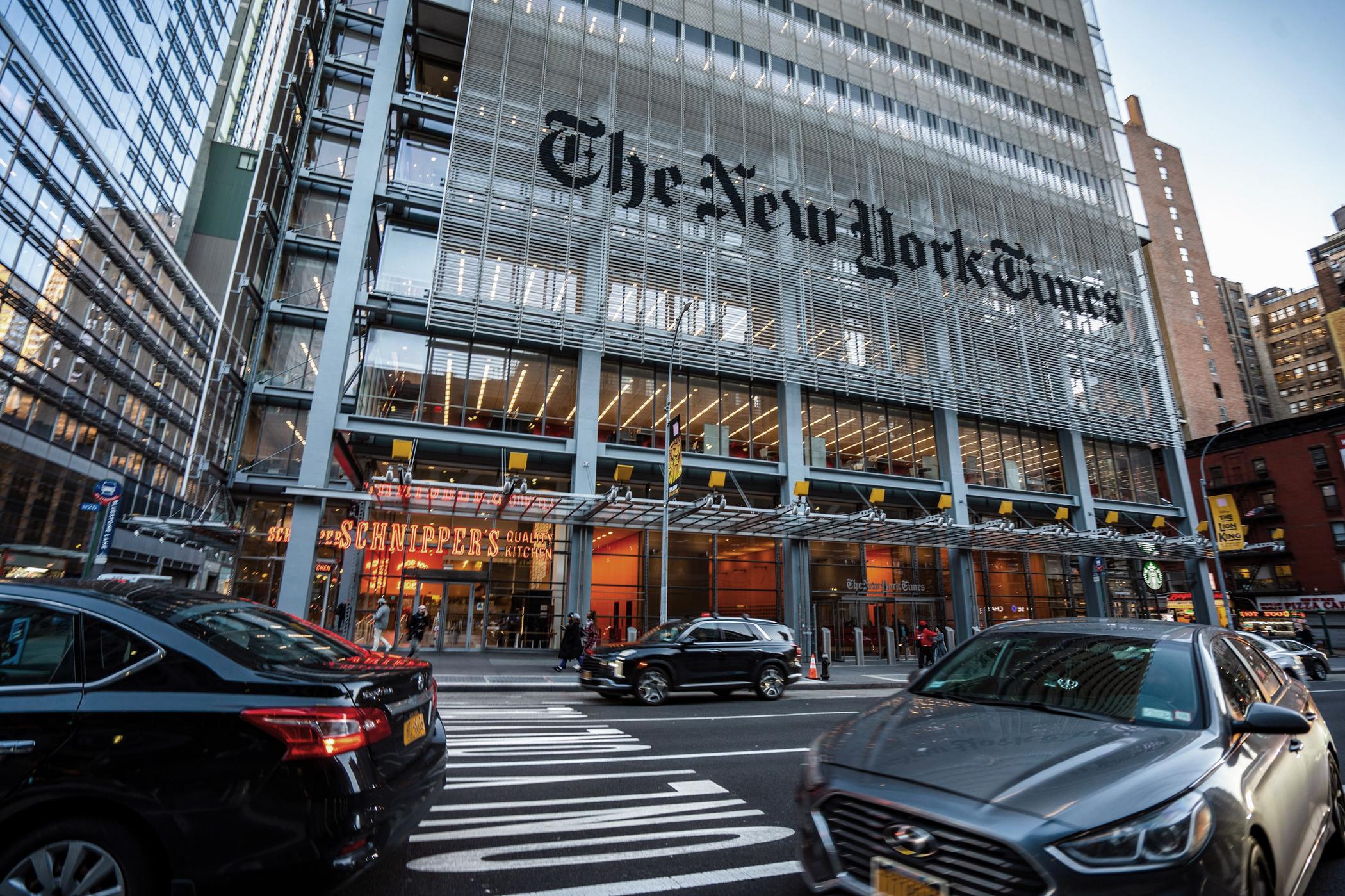
Medical Claims
The New York Times article alleges that 14 former performers either experienced injuries without seeking treatment or saw such a thing happen to others. Some said they felt they would be criticized for seeking treatment, but none alleged that anyone was denied treatment by the company.The article said some serious injuries were treated, but that “such interventions were rare.”
That appears to be false, according to the FDIC.
“According to our findings, while some Shen Yun dancers do suffer injuries in the course of training or performing, none of the artists we spoke to indicated the company discouraged them from seeking medical treatment,” its report reads.
“Several doctors who practice medicine in towns near Shen Yun’s headquarters in New York say they regularly treat Shen Yun performers.”
Dancers of Shen Yun’s caliber might push through some aches and pains, but wouldn’t ignore significant injuries, if only because it would compromise the show’s quality, the FDIC said based on multiple interviews.
“If it will cause a lasting injury or is too painful, of course, we don’t perform,” Piotr Huang, a lead Shen Yun dancer and instructor, told FDIC.
“We have a responsibility to our audience and only want to show our best, therefore we would never perform with a serious injury, and Shen Yun wouldn’t allow it anyway.”

CCP Efforts
Earlier this year, the FDIC obtained information from three whistleblowers familiar with the CCP’s internal activities. They provided notes from a meeting of the Chinese Ministry of Public Security on a provincial level as well as from an internal report produced by a major CCP-controlled investment fund.Based on the notes, which The Epoch Times reviewed, the CCP has launched a new campaign to target Falun Gong overseas. The main goals of the campaign are to create internal divisions within the Falun Gong community and to seed allegations with the greatest potential to prompt investigations by U.S. authorities.
The main vehicles for the operation are social media influencers who spread anti-Falun Gong and anti-Shen Yun messaging outside China, according to the whistleblowers.
Meanwhile, the regime is seeking to “mobilize central state media resources, university think tanks and other unit resources [to] actively share defamatory information about Falun Gong with overseas media,” one of the whistleblowers wrote.
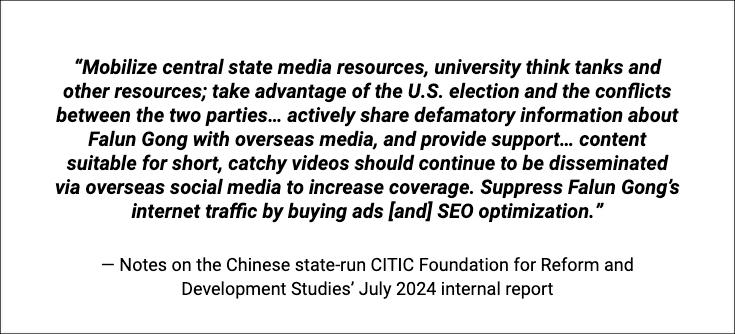
One of the influencers mentioned in the notes by name is a U.S.-based YouTuber of Chinese descent whose online content is dominated by unsubstantiated allegations against Shen Yun and Falun Gong, interspersed with grandiose ruminations about his efforts to “destroy” them.
Some Falun Gong practitioners in China have reported to the FDIC that the CCP police is using the YouTuber’s content in “brainwashing classes” meant to force Falun Gong detainees to give up their faith.
“I was the one who introduced people [ex-performers] to the New York Times, especially for the initial interviews. They found additional people through that,” the YouTuber wrote on X following publication of the New York Times articles.
Connections to Beijing Dance Academy
At least three of the performers the YouTuber spoke to have mentioned online that after leaving Shen Yun, they traveled to China and were invited to the Beijing Dance Academy (BDA), a CCP-run dance school that views Shen Yun as a main competitor.The BDA-linked dancers formed the backbone of the New York Times main article, and were photographed and quoted multiple times, according to the FDIC.
One of the performers operates a dance studio in Taiwan that runs a collaboration with the BDA.
She spoke highly of Shen Yun after she left, according to Facebook messages she exchanged with a Fei Tian professor.
“I have no regrets in this life. These are all given by the school! Without school, I would not be where I am today. Without teachers, my history would not be possible. ... You have worked hard! Thank you everyone,” she said in one of the 2020 messages, which were quoted in the FDIC report.

That same year, she asked about returning to Fei Tian and invited the professor to her wedding.
In April 2024, however, she wrote to the professor that she was “not doing that well” and complained that her husband, who runs the dance studio with her in Taiwan, was “doing everything.”
“He manages my life kind of strictly,” she said, noting that she had to find an excuse to go outside so she could message freely because her husband didn’t allow her to use Facebook.
Several parents with children at the dance studio in Taiwan told FDIC that the studio asked all families that practiced Falun Gong to leave the studio in March 2024. The dancer’s husband told parents that they need to “pick a side,” the report quoted the parents as saying.
Shen Yun and FDIC representatives warned the New York Times reporters about issues with their sources, including the BDA connections.
“None of these conflicting interests were noted in the article,” the FDIC said.
The New York Times articles did not disclose the dancer’s ties to BDA.
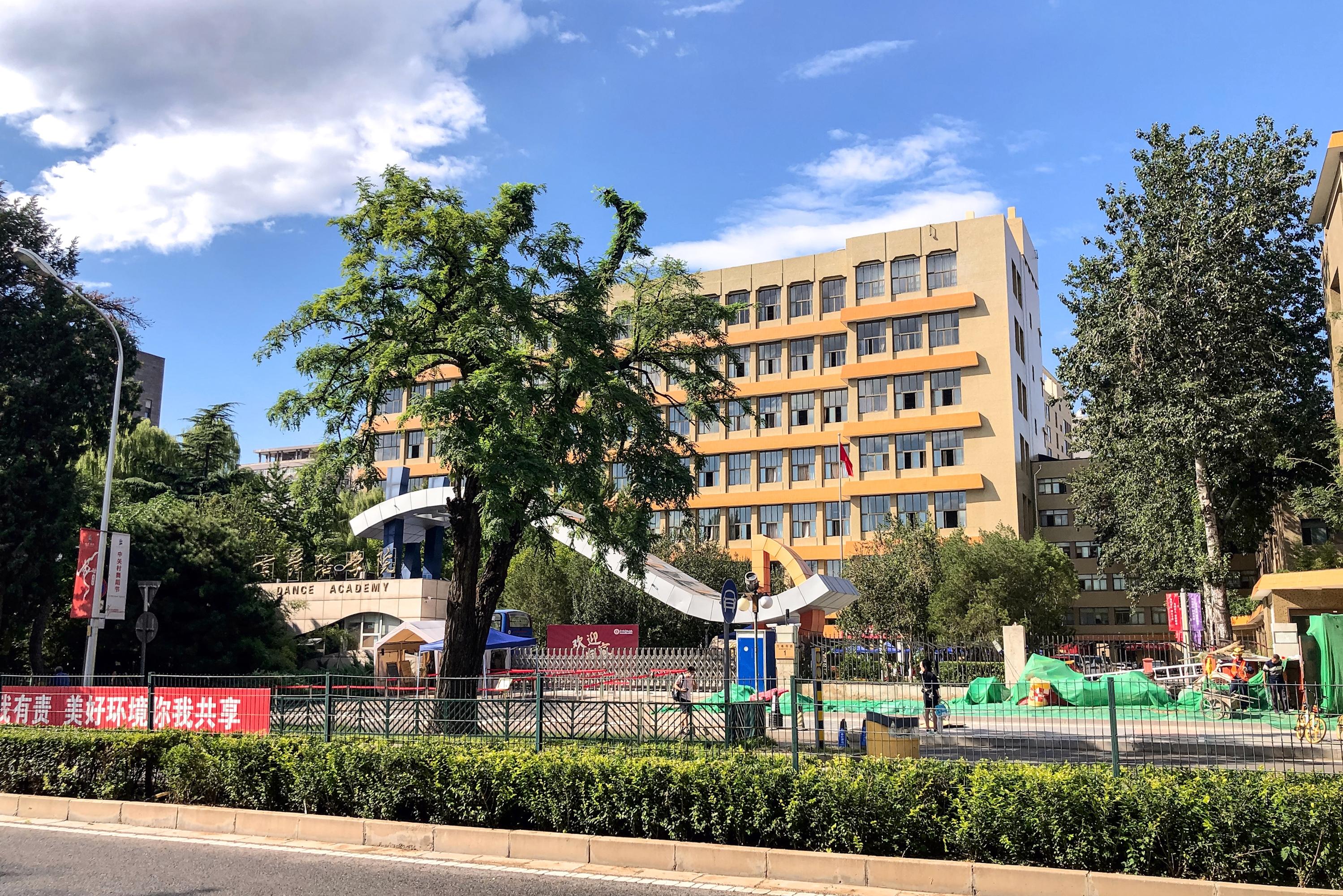
CCP Propaganda
The CCP launched its campaign to “eradicate” Falun Gong in 1999, after estimates placed the number of people practicing the spiritual discipline at 70 million to 100 million, outstripping the CCP membership. Overnight, the regime flooded the airwaves with hate propaganda against Falun Gong.The New York Times parroted the regime’s propaganda in dozens of articles, especially in the early years of the persecution, the FDIC noted in a previous report. The paper’s new articles on Shen Yun resurrect core CCP propaganda tropes against Falun Gong.
The FDIC said that the paper displays “anti-religious bias” as far as its coverage “sensationalizes Falun Gong beliefs that are common among many religious traditions, such as the idea that suffering is a consequence of sin or karma, that the universe has a benevolent Creator, and a concern with uplifting the soul toward spiritual salvation.”
The “inability, or unwillingness” of the paper “to contextualize Falun Gong’s teachings within theological and, in particular, Buddhist and Taoist traditions, demonstrates religious ignorance, intolerance, and explicit bias,” it said.
The New York Times article said that Shen Yun performers approach their art with “a fierce sense of obligation” toward an “urgent spiritual mission.”
“We get to be part of this big mission to revive traditional culture. And also, for me, as a Falun Gong practitioner, I get to tell people through my art the truth about what’s happening in China,” Shen Yun percussionist Alice Liu told The Epoch Times.
The artists do consider this mission to be urgent, and this attitude is reflected in the Falun Gong community more broadly.
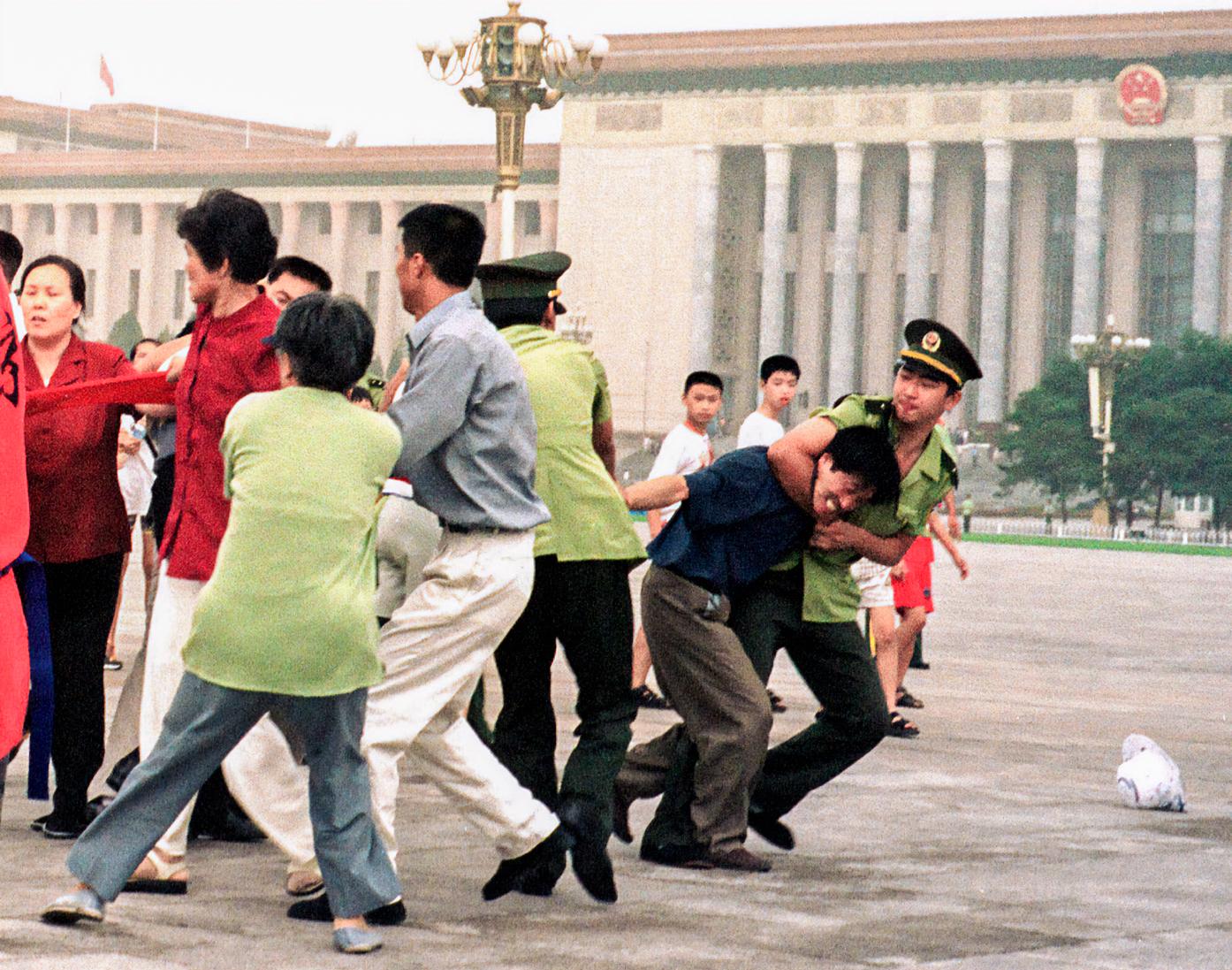
The paper’s main article on Shen Yun only mentioned the persecution in passing and gave no indication that countering the abuses in China could be a motivating factor for Shen Yun performers.
Instead, it claimed that Shen Yun’s mission pertains to “an approaching apocalypse”—a long-debunked CCP propaganda theme.
Current and former Shen Yun artists and Falun Gong practitioners interviewed by The Epoch Times said they do not hold a belief that the world is about to end.
Several informed the New York Times reporters that they felt the reporters were going wrong in their portrayal of Falun Gong’s beliefs, including in emails to the reporters published by the FDIC.
“The way you single us out, criticize our religious beliefs, and paint a false narrative to make us look bad, [it’s] just like what the CCP and [its] state-run media [do] to us,” one former Shen Yun dancer wrote in an email to the reporters.
“I’ve never seen NYT do that to other groups of faith ... and yet you do that to us? It seems hypocritical, and these false narratives of us can generate real [animosity].”
School Policies
The New York Times’ main article cast as “ostensibly oppressive” Fei Tian school policies “that are, in fact, industry standard practices, or at least increasingly common approaches at schools in the United States,” the FDIC said.The school requires minor students to gain permission to leave campus, and the school limits smartphone use and time spent online, which is an increasingly common policy at American schools, the FDIC said.
Fei Tian provides all its students full-ride scholarships for education from middle school through post-graduate studies, “along with free room and board, a cash stipend for program expenses, and opportunities to travel the world,” the FDIC said.
“Such arrangements are common in ballet and other performing arts companies, although Shen Yun’s package is more substantial than many,” it said.
But The New York Times framed such benefits “as tools of exploitation and emotional manipulation,” the report said.
The article also cast as abusive the requirement for dancers to maintain optimal weight, the FDIC noted.
“But that is common among professional dancers, athletes, and models. It is not only for aesthetic reasons but also to reduce the risk of injuries, as extra weight can put additional stress on joints and bones,” it stated.

Call for Introspection
The FDIC criticized The New York Times for failing to follow its own editorial standards and for failing to ensure “that foreign influence operations by malign actors are not at play.”“Such decisions have consequences,” the report reads.
“Within China, the CCP’s propaganda apparatus has already begun making widespread use of the articles in its own campaign to demonize Falun Gong, a campaign which fuels violence against millions of innocent people—including family members of Shen Yun performers. Outside China, such reporting inevitably turbo-charges Chinese diplomatic efforts to pressure theaters not to book shows, while putting performers in physical danger.”
It called on the paper to retract the articles, “launch an internal investigation,” and “implement corrective measures to ensure these failures do not repeat in future reporting about Shen Yun or Falun Gong.”




